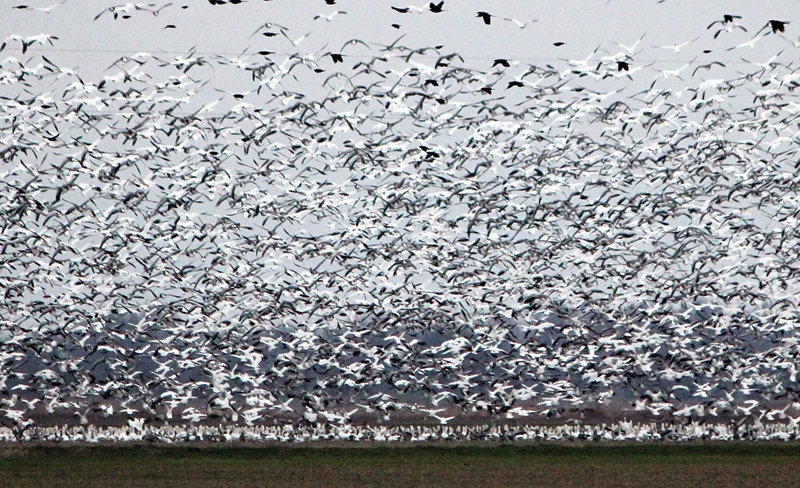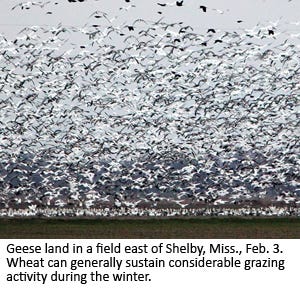March 11, 2011

Mississippi’s 3.7 million acres of cropland were in good shape by late winter despite high snow geese numbers in the Delta and heavy March rains.
Darrin Dodds, cotton specialist with the Mississippi State University Extension Service, said cotton fields were generally in good condition.
“A favorable harvest season in 2010 allowed many growers to complete fall operations in a timely manner and prepare the land for the 2011 growing season,” Dodds said. “Although some weed species are proving tough to control, fields are generally in good shape.”
Much of the state suffered from a lack of rainfall through most of the growing season, and Dodds said this depleted the subsoil moisture.
“Timely rainfall should be beneficial for many crops as long as it does not become excessive,” Dodds said.
Erick Larson, Extension grain crops agronomist, said many Delta wheat fields have been visited by a lot of snow geese. “Wheat can generally sustain considerable grazing activity during the winter,” Larson said. “These birds should not reduce yield potential as long as they eat just the top growth of wheat before it leaves winter dormancy and begins to grow in the spring.
“The geese will damage the wheat stand if they extract the entire plant. This threat is most likely if feeding is particularly intense and sustained through February,” he said. “Normally, by the time it warms up enough for the wheat to begin growing rapidly, the geese migrate back north.”
Jerry Singleton, area Extension agronomic crops agent in Leflore County, said snow geese numbers have increased each year because of almost no hunting pressure and limited predators.
“We had more problems with snow geese this year because their numbers were up and we had more wheat planted,” Singleton said. “Most farmers were very aggressive about trying to keep the geese out of the wheat fields. The geese do a lot of grazing, and I’ve seen fields where they’ve thinned the wheat population quite a bit.”
Larson said most corn fields are wet, but saturated conditions are not unusual in the spring. Dry weather allowed fall corn field preparations to go well, and with herbicide burndown applications mostly complete, the fields are looking good for spring planting if producers can get a few breaks from spring rains. Late March to early April is the optimum corn planting time.
Nathan Buehring, Extension rice specialist, said waterfowl in flooded fields has not been a problem for rice producers. Good fall weather meant rice fields are mostly ready for the spring, but recent windy weather has hampered the aerial application of burndown chemicals needed to kill weeds before rice is planted.
“There’s been so much ground ready that pilots have not been able to keep up with burndown treatments,” Buehring said.
He said rice farmers are waiting for a dry spell so fields will be ready for spring planting.
“We like to start the last week of March in the southern part of the Delta, and as we move farther north, the first week of April is a good target date for the rest of the state,” Buehring said.
You May Also Like




